Search Results for 'Urban Council'
9 results found.
A Motley Gathering of Sycophants

Castlebar got a new Town Hall on 6 June 1894. The Linen Hall, built in 1790, was given a new purpose. In 1986, the Education Centre in John Wesley's Methodist Church on the Green relocated to the Town Hall. When the Arts Council came on board in 1990, the Linen Hall Arts Centre was born, and the 'Linen Hall' had a new purpose.
Joe Howley, patriot
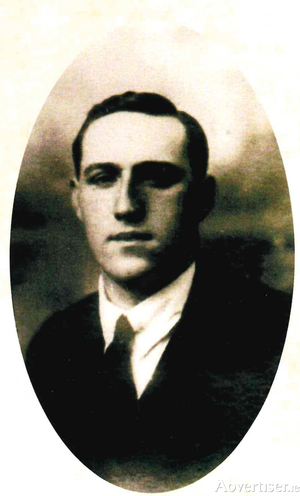
Michael Joseph Howley was born in Oranmore in 1895. His father died when Joe was just two years old. His mother was a sister of Peter Rabbitt, the proprietor of Rabbitt’s provision shop, licensed premises, and lodgings in Forster Street. She later married William Keane, the owner of Keane’s Bar in Oranmore. Joe, as he was popularly known, attended the local primary school and later went to the Bish in Galway. He obviously worked at farming as his mother once wrote, “He made a good lot with trading with cattle and sheep”.
Galway Observer, May 27, 1922
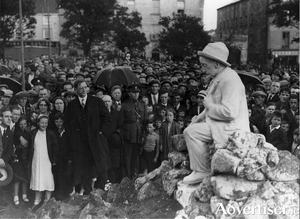
“On Thursday night a crowd numbering several thousand assembled inside the Square, and two men set to work sawing at the base of life-size bronze monument of Lord Dunkellin, a brother of the notorious landlord, Lord Clanricarde of Portumna. In a scene reminiscent of the downfall of Saddam Hussain’s statue in Baghdad, shortly after the invasion of Iraq in 2003, a rope was fastened around Dunkellin’s neck, and with a mighty pull, down it fell amidst great applause.”
Christabel Pankhurst in Galway

Our image this week is of a newspaper advertisement for an extraordinary meeting that took place in the Town Hall 100 years ago today.
The Galway City Challenge Hurling Cup 1920
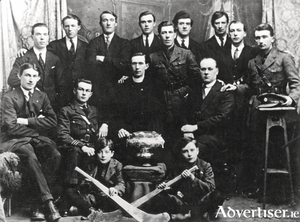
As nationalist sentiment was rising in the early years of the last century, a new generation of GAA officials emerged who were zealous in their belief in the transformative power of the GAA and they saw themselves as engaged in a project of national liberation. Some GAA tournaments were staged as part of a pro-Boer campaign. Police reports noted: “The ambition it seems to get hold of the youth of the country and educate them in rebellious and seditious ideas,” a somewhat hysterical interpretation of the GAA ban on foreign games.
The diving tower at Blackrock
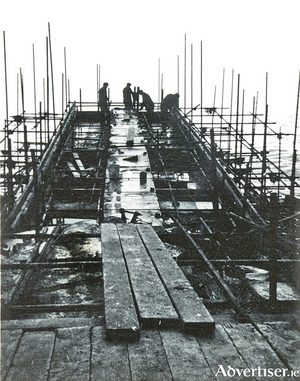
The warm summer of 1885 encouraged Mr. Moon and his friends to place a springboard at Blackrock where there is a tidal range of 17’3”. This did not please the landlord Col. O’Hara who made life difficult for the bathers, often denying them access to the bathing area.
Mícheál Walsh, patriot
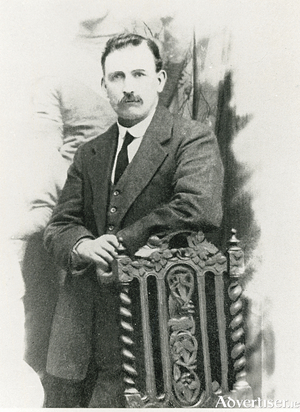
Mícheál Walsh was a native of Headford who bought the Old Malt pub and grocery in High Street c1906. He was a Republican and a member of the Urban Council. He once proposed at a meeting that the idea of toll booths, of collecting tolls from people bringing goods into the city, should be extended to include the docks in order that they might levy any ships coming in to the docks, including Navy vessels. This was too much for his fellow (Unionist) councillor Joe Young, who protested, “Sure if that was the way, no British naval vessel would ever come in to the docks.” “I rest my case,” said Mr Walsh.
The evils of mixed bathing
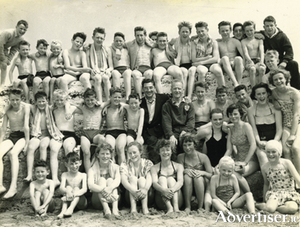
In 1925 there was a major debate in the Urban Council about a Garda report that two men from County Offaly who had been swimming in the sea in Salthill without any bathing costumes had been apprehended, and how the gardaí should deal with them. The debate was about the evils or otherwise of mixed bathing in Salthill.
St Patrick’s Day parade in Galway, 1916
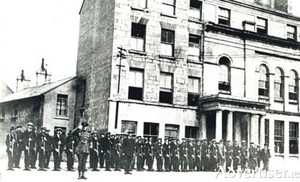
This parade started from the Square in the following order: Eyre Square North – Industrial School Band; Galway Urban District Council; Galway Board of Guardians; Students of UCG; AOH. Eyre Square East – The Monastery School Fife and Drum Band; UIL; Town Tenant’s League; Galway Woollen Manufacturing Co; and the Irish National Foresters.

